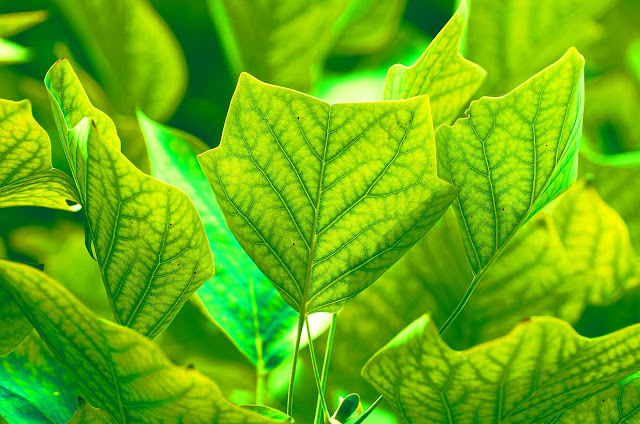Tulip Tree is famously known for its tulip-like flower. Although the tree is widely known as the tulip tree, its botanical name is Liriodendron, and it comes from the family of Magnolia. Fascinatingly it is also referred to as Yellow Poplar or Tulip Poplar; this tree, by the way, doesn't resemble true Poplar.
Two species of this tree are widely known. The first is native to Northeastern America, known as Liriodendron tulipifera, and the second is native to Vietnam and China, known as Liriodendron Chinese.
Both species are used for different purposes, but the American one is more useful and common. Nonetheless, both of these trees grow amazingly tall. In this article, we'll be covering some basics about this tree, and we will start with how it looks.
What Does A Tulip Tree Look Like?
The first thing which can help you in recognizing the tulip tree is its height. It is one of the tallest trees in North America (1). The average height of this giant of a tree is 80–150 ft (24-26m), shaping itself as an oval with 40-50 feet width.
The tulip tree leaves are very different and unique, having 4 to 6 lobes at the end, unlike most (or all) tree leaves. The tulip tree flower, as the name suggests, is just like a tulip, having nine tepals, three outer sepals, and six inner petals.
Usually, in early summer, the tulip tree flower starts to grow, it is green, but in some cases, it is pink or yellow, which is fondly observed by many people. These are the general characteristics of a tulip tree but let’s talk about a few specific ones.
Little Volunteer Tulip Tree
This tree is not giant, nor does it take a lot of time to grow, which makes it perfect for a backyard tree—growing at about 70-100 feet and having beautiful yellow buds in summer, making the people who planted it proud and happy.
Japanese Tulip Tree
This one is on the short and beautiful side. It is growing at about only 15-25 feet and the same in diameter, making it appealing to look at. Not to forget the beautiful pink buds that bloom, just making the tree a sight to be seen.
Black tulip magnolia tree
This tree is called the black tulip magnolia tree, but it doesn't have black blossoms. Instead, we get a darker shade of pink. The black tulip magnolia tree reaches a height of about 16-20 ft and a width of 7-11ft tall. It is also a lovely and favorite tree to plant.
Other Few
There are a few hybrids of the tulip tree which we will talk about briefly.
- Florida Strain: Fast-growing, big tulip tree leaves, and green-yellow flowers. Not suggested for small yards as it grows big.
- Ardis Dwarf: This tree is short, compact, and wide making it perfect for shading. It has green and yellow flowers and does not require much care.
- Aureomarginatum: Medium-sized, good-looking, and one of the best options in the market for tulip trees. It is like a typical tulip tree but just medium height and more comprehensive.
These are just a few examples, but there are many types when it comes to tulip trees.
How To Grow Tulip Trees
Growing tulip trees is relatively easy, which also makes it fun. These trees grow at a high-speed rate making them one of the best options for planting a tree. But before planting, there are some basic needs for the tree to grow correctly; let’s go through them quickly.
- The tree requires quite hot weather; that’s why they are primarily found in Eastern US. A bit of humidity is also preferred as it helps the tree be strong, but it can survive through a drought.
- The soil should be pretty rich in acids; many professionals often suggest reforming the soil with organic stuff like ash, potato peels, dead leaves, etc. However, the tree can grow in a sandy sort of soil so long as it's not holding water for too long.
- Sun is crucial for this tree; try planting the tree where it's sunny or at least where there is the partial sun; otherwise, if kept in the shade, the tulip tree leaves will turn dead and brown. So the more the sun, the better the tulip tree(just adding those for fun).
- Watering regularly is a big YES for this tree, especially in scorching weather. If the tulip tree leaves are dropping before fall, your tree is not getting enough water, so keep a watch.
- A newly planted tulip tree prefers fertilization. Let it be liquid or grain type, but fertilization is better for the freshly grown tulip tree. At the same time, older trees don’t make much of a difference with fertilization.
- Lastly, we described a few varieties of tulip trees; when planting your own, keep in mind which one is best suited for you. We recommend doing more research on this as it will significantly help you.
Now then, since all the proactive steps are explained, let’s move on to growing a tulip tree from a seed.
- The first step is to get the seed. You can get the seed from the samara, which grows from the flower during fall. Now take the samara and place it dry, giving it time to separate the seed and the fruit.
- Next up, we need to germinate the seed, which we can do by placing the seed in a cold place for about 60 to 90 days. It is necessary since we need to replicate the natural process, which helps it germinate.
- Lastly, you take that germinated seed and sow it three times its size into the acidic soil. Make sure the soil meets the conditions mentioned above. The tree is fast-growing, so depending on the species you planted, it will start growing.
If you do not feel like doing all that work, you can buy a tulip tree plant from a shop and plant it the same way we discussed with the seed.
Uses Of The Tulip Tree
The tulip tree has varieties of uses in terms of almost everything. The tulip tree is known and recognized in medical science a lot.
It is also a great source of raw materials with its fast growth. There are a few more uses that we will discuss, but for now, let’s start with a few of the medical benefits it provides.
Medicinal Benefits
- We have been fighting malaria for about 10,000 years now, and we have found a lot of good cures to fight it. One of the most affecting remedies comes from boiling the outer shell of the tulip tree’s wood.
- As the outer shell, the inner layer (inner bark) of the tulip tree is beneficial, which helps in curing musculoskeletal disease, which is a disease affecting your joints.
- Coughing (2) is one annoying disease known to humanity, and the tulip tree can also help with its wood’s shells.
- The tulip tree flower is widely used in many ointments to soothe your skin or help with a burn.
- Many of the soothing ointments we use today have the tulip tree flower as an ingredient.
Other Uses
- The wood gathered from the tulip tree is widely used in America in crafting a lot of furniture.
- The wood is also helpful for flooring, making doors, etc. since it's a cheap alternative to others.
- The shape of the tulip tree, the color of the tulip tree flowers, and the unique tulip tree leaves make up for a beautiful and elegant tree that adds up to the beauty of the landscape.
- The bees are attracted to the tulip tree because its flower is rich in nectar. It makes this tree a good producer of honey.
- The tree is habitant to squirrels, deers eat from it fondly, and attracts various other animals, making it a beautiful scenic tree.
- It might be a bit surprising, but the tulip tree with its beauty influenced poetry. In some of the famous poems, the poet’s main plot was the tulip tree.
These are the fantastic benefits that come or have come with the tulip tree; of course, there are many more that we have not discussed or we don’t even know, which make the tree even more of a beauty.
Conclusion
The tulip tree is prevalent in America and worldwide for excellent reasons. The tree comes in various types and forms, making it easier for almost anyone to have. The tulip tree flower that blooms is one of the best, resembling, of course, tulip, and the shape or overall the tree is beautiful.
The tree is straightforward to grow, does not require any special care, and grows exceptionally fast. These qualities make up for a perfect tree to have in your backyard. The people who planted it almost always are proud and give positive reviews about the tree.
There are, of course, a lot of benefits, like being able to make home remedies for some common diseases. So, all in all, the tree is not a lot of work, but it's a beauty to look at with a lot of benefits.
That's why it is a highly recommended tree in a hot climate. Besides, it will do a great job providing shade.






